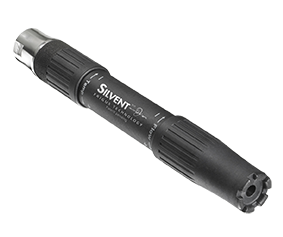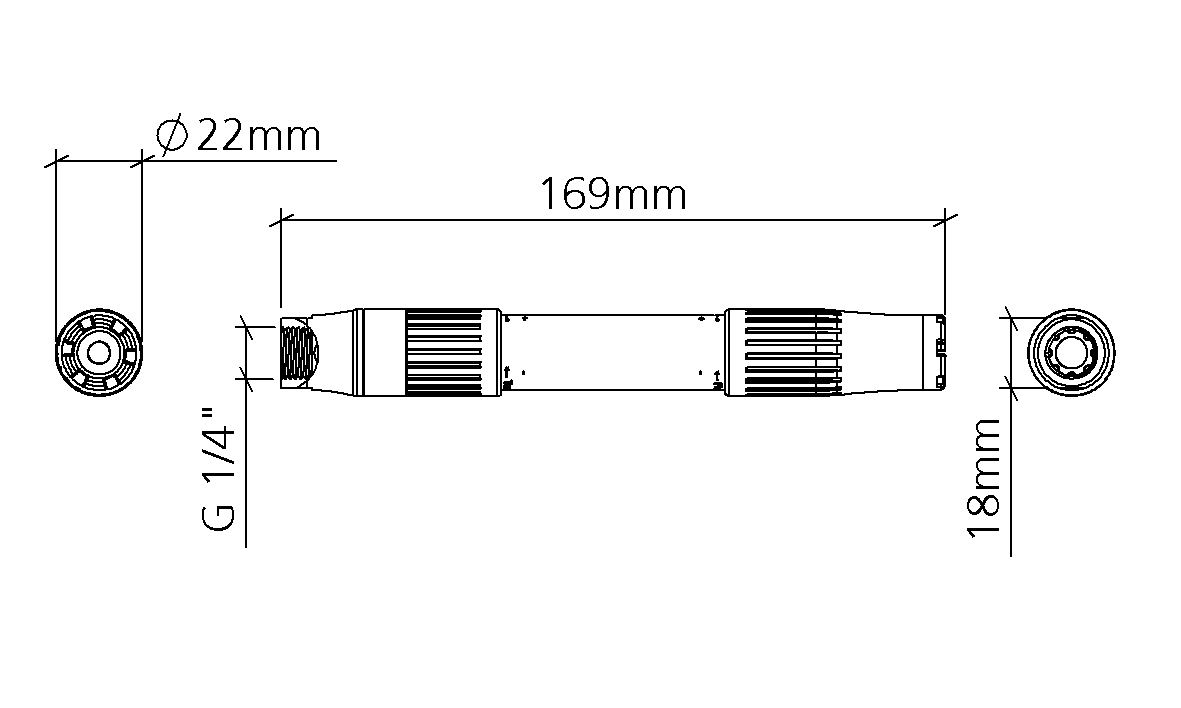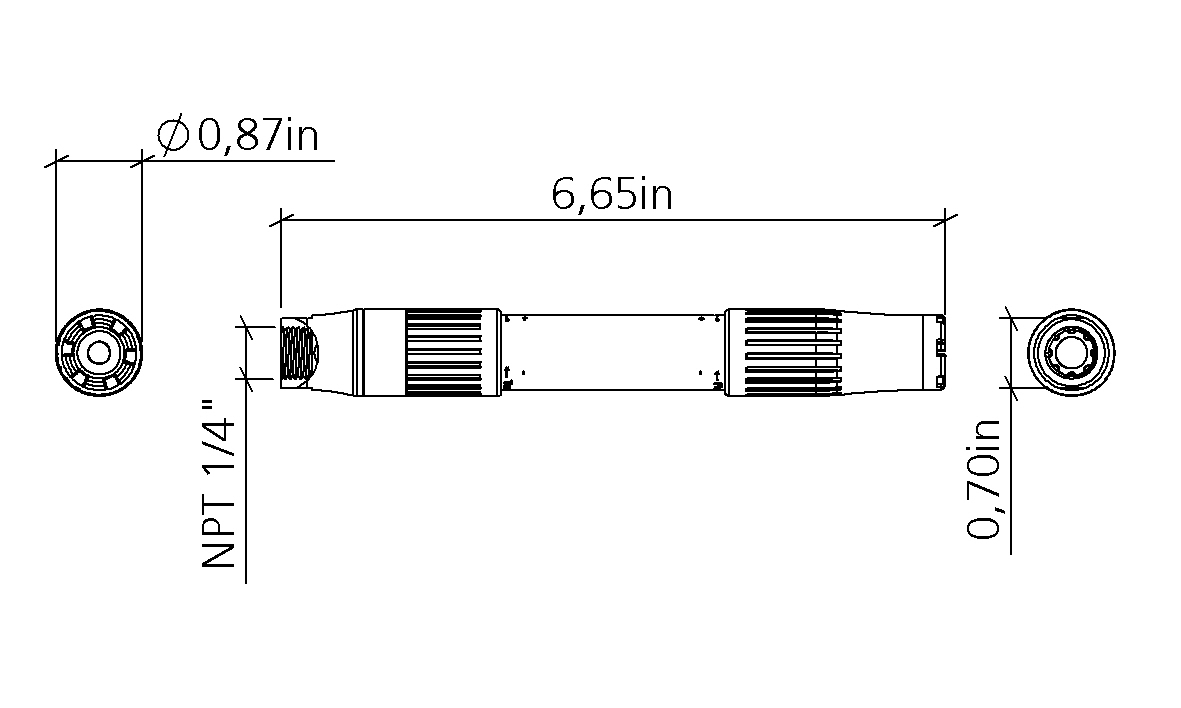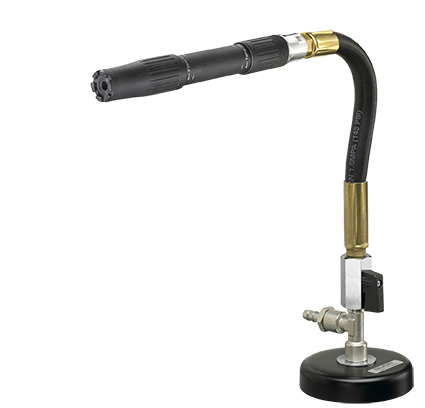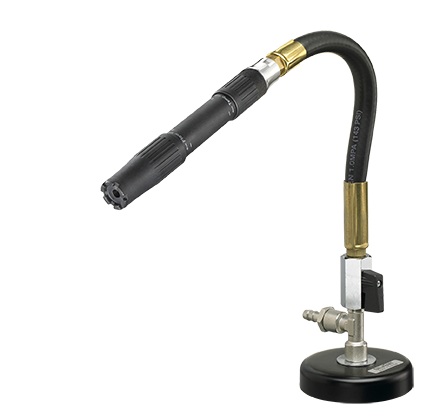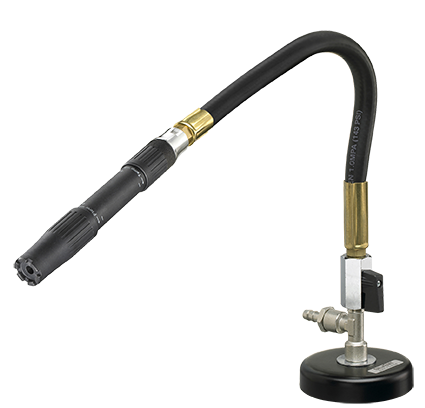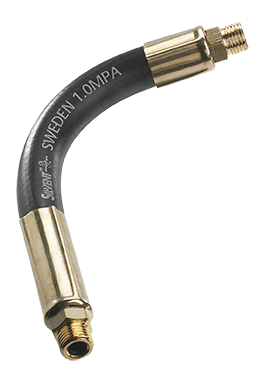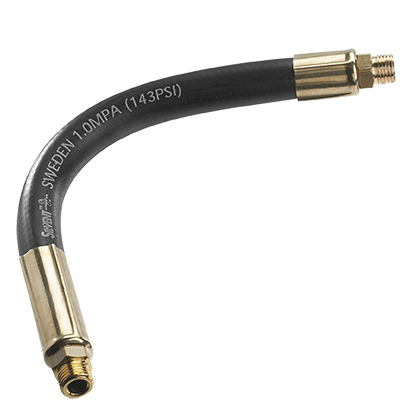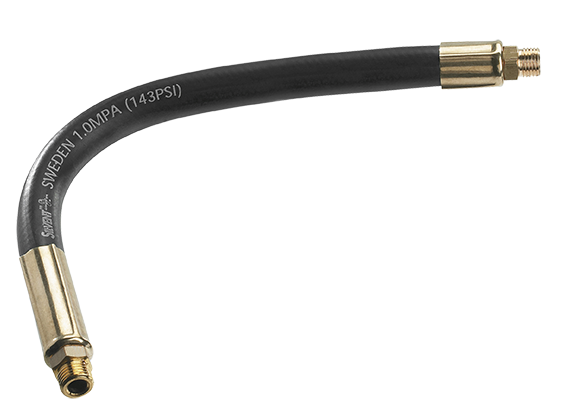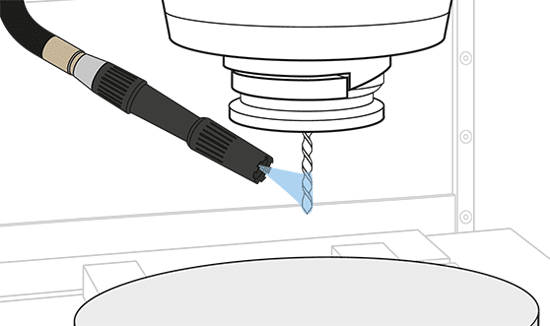1. Air supply
Regular compressed air is supplied axially.
2. Laval paths
Air flow is rotating more than 1 000 000 rpm.
3. Exhaustion
Warm air exhaust.
4. Energy transformation
Heat energy is removed from the inner air swirl.
5. Laminar cold air flow
Cold air is discharged from the front at a low noise level.


